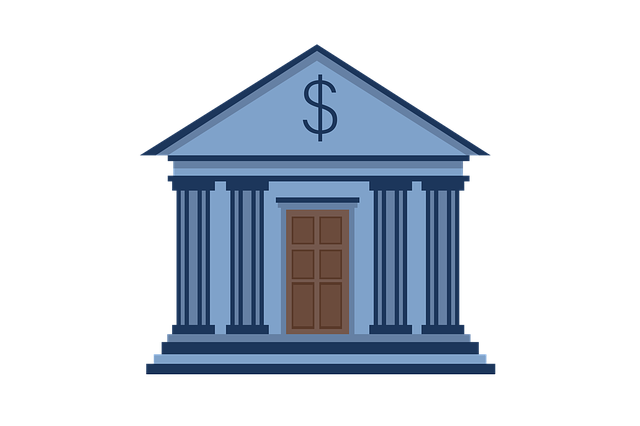Understanding title loan amortization is crucial for navigating short-term financing options effectively. The amortization schedule breaks down loans into manageable installments, detailing principal and interest payments, providing borrowers with a clear repayment plan. This knowledge empowers informed decisions, especially regarding interest rates' impact on long-term financial obligations. Regularly reviewing the Title Loan Amortization Schedule, making extra payments, maintaining good credit, being aware of fees, considering refinancing, and communicating with lenders are strategies to optimize repayments, save money, and foster a healthier financial future.
“Unravel the mysteries of title loan amortization and gain control over your financial journey. This comprehensive guide dives into the intricate details of how interest fluctuates throughout the repayment process, offering valuable insights for borrowers. From understanding the foundational concept to mastering strategies for optimal repayment, this article equips readers with the knowledge to navigate their Title Loan Amortization Schedule effectively. Discover how every dollar counts and learn to manage your loan with confidence.”
- Understanding Title Loan Amortization: Unraveling the Concept
- The Mechanics of a Title Loan Amortization Schedule
- Strategies to Optimize and Manage Your Title Loan Repayment
Understanding Title Loan Amortization: Unraveling the Concept

Understanding Title Loan Amortization: Unraveling the Concept
Title loan amortization schedule is a crucial aspect of any title loan agreement. It outlines the plan for repaying the loan in a structured manner, ensuring that borrowers pay off both the principal and interest over time. This process involves breaking down the total amount borrowed into manageable installments, typically with each payment covering a portion of the principal and a specified amount of interest. The concept is designed to make it easier for borrowers to manage their debt, providing them with a clear roadmap for loan payoff.
In the fast-paced world where quick funding is often needed, title loans offer a convenient solution. However, understanding amortization is vital for borrowers to comprehend the full cost of the loan and ensure they can meet the repayment obligations without financial strain. This knowledge empowers folks to make informed decisions about their short-term financing needs, specifically focusing on how interest rates impact their overall loan payoff strategy.
The Mechanics of a Title Loan Amortization Schedule

A Title Loan Amortization Schedule is a crucial tool for borrowers to understand how their loan payments are distributed over time when securing a secured loan through their vehicle’s title, such as those offered in cities like Dallas and San Antonio. This schedule breaks down the total loan amount into smaller components, detailing both the interest and principal repayment for each period. It typically spans the duration of the loan term, illustrating how the borrower’s payments systematically reduce the debt.
The mechanics behind this process involve several key elements. First, the loan officer calculates the total loan amount plus the agreed-upon interest rate. Next, they divide this sum by the number of scheduled payments to determine the periodic payment. Each payment consists of principal and interest portions; the schedule ensures that these components are accurately apportioned for each repayment interval, leading to a more transparent borrowing experience.
Strategies to Optimize and Manage Your Title Loan Repayment

Staying on top of your Title Loan Amortization Schedule is key to managing debt effectively and saving money in interest charges. Here are some strategies to optimize your repayment journey:
1. Regularly Review Your Schedule: Understand how much you owe, when payments are due, and how the remaining balance decreases over time. This visibility allows you to track progress and identify potential issues early on.
2. Make Extra Payments When Possible: Even small additional payments can significantly reduce the overall interest paid. Aim for paying more than the minimum required each month, focusing on portions of the principal balance first to minimize interest accrual.
3. Maintain Good Credit Hygiene: A strong credit score is beneficial beyond just securing favorable loan terms; it can also lead to better interest rates in the future. Keep your payments up-to-date, maintain a low credit utilization ratio, and regularly check your credit report for errors.
4. Be Mindful of Fees and Penalties: Some Title Loan Amortization Schedules may include fees for prepayment or late payments. Understand these terms to avoid unexpected charges.
5. Consider Refinancing Options: If market conditions change or your financial situation improves, you might find better rates by refinancing your title loan. A lower interest rate can save you money in the long run. Remember, though, to factor in the costs associated with refinancing before making a decision.
6. Communicate with Your Lender: Don’t hesitate to reach out to your lender if you have questions or concerns about your amortization schedule. They can provide clarity and support tailored to your specific loan. Additionally, some lenders offer flexible repayment options that could better suit your budget.
In understanding and managing title loans, the amortization schedule plays a pivotal role. By grasping how interest changes over time in this unique repayment plan, borrowers can make informed decisions to optimize their financial strategies. Navigating the mechanics of the amortization schedule enables individuals to identify key points for potential savings or adjustments during the loan payback period. Ultimately, leveraging this knowledge ensures a smoother and more manageable process for those utilizing title loan amortization as part of their financial toolkit.






